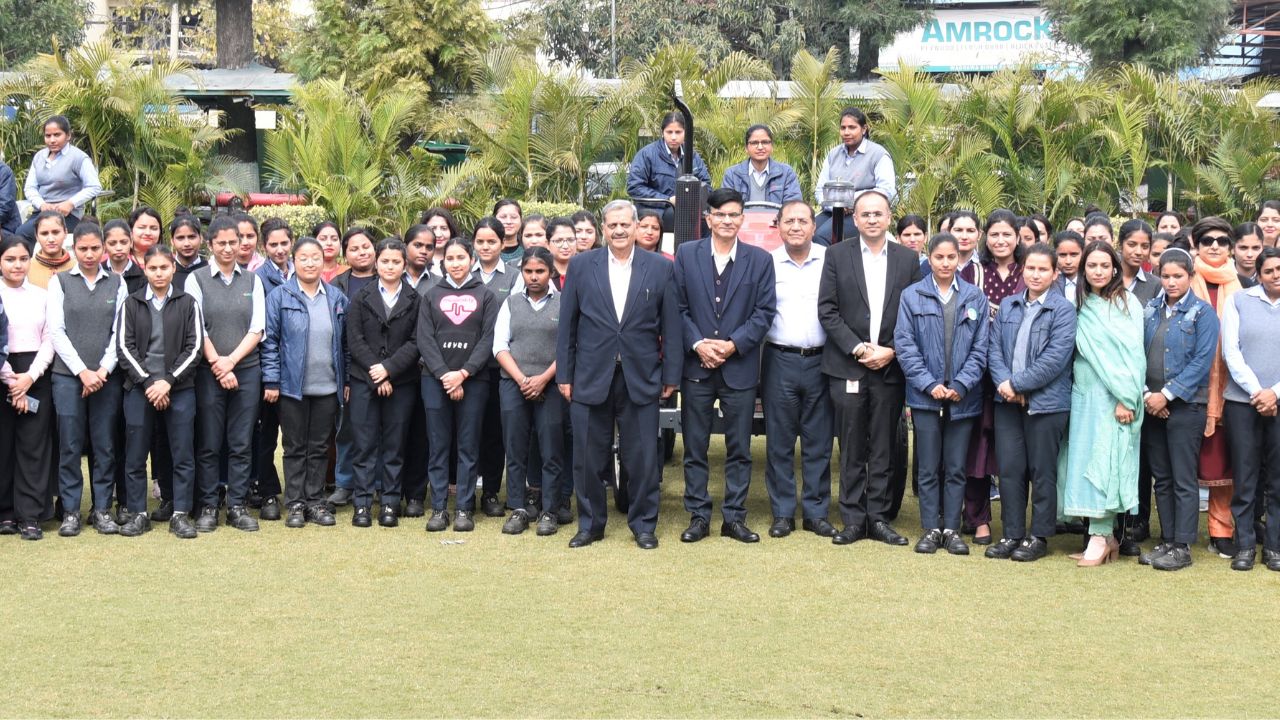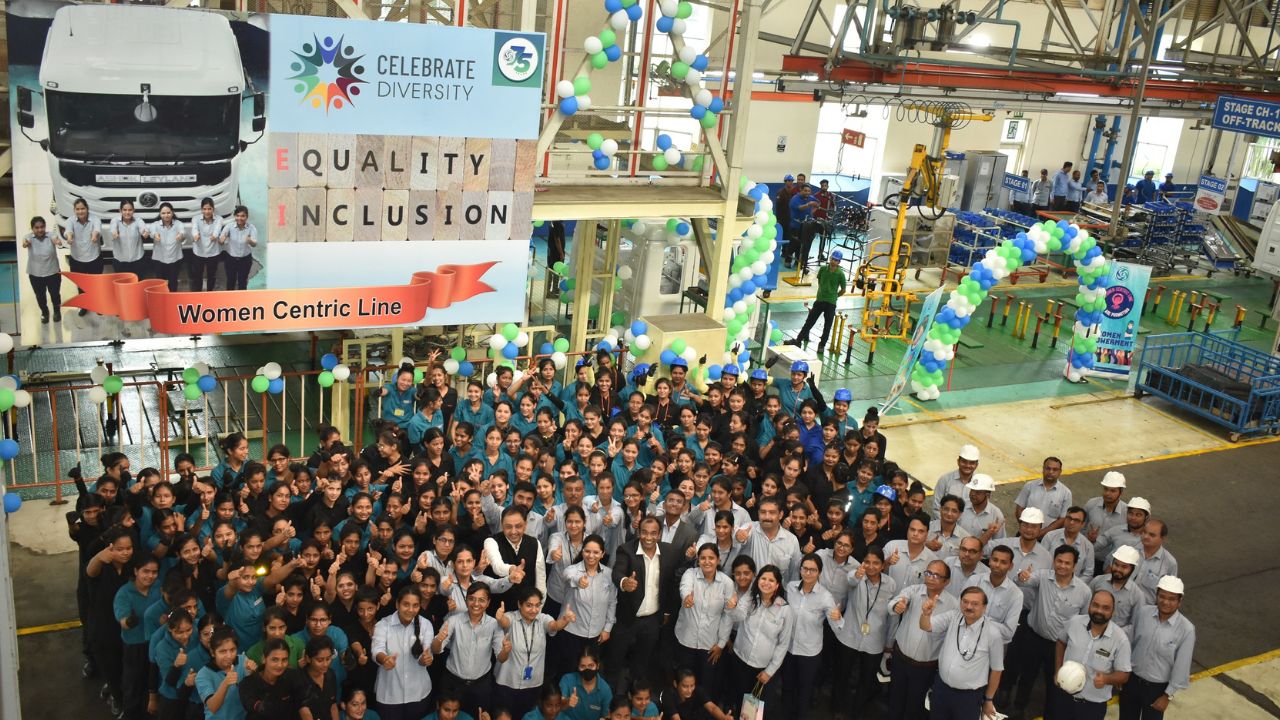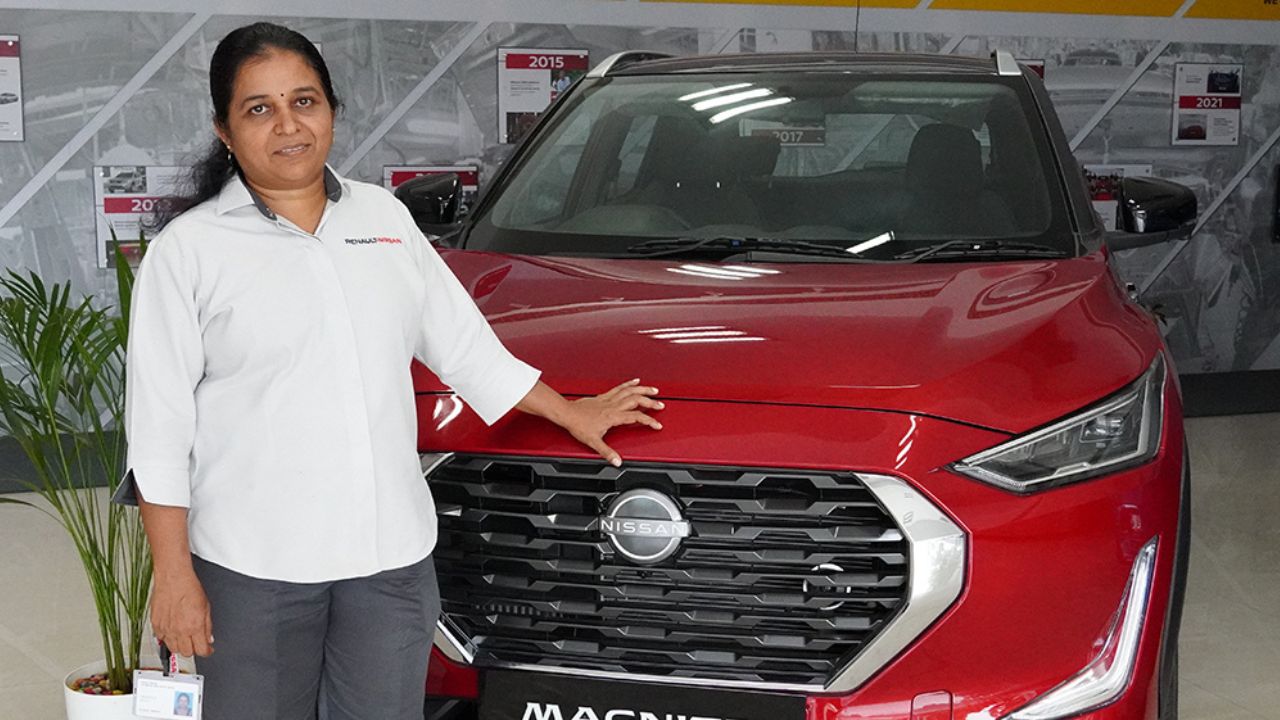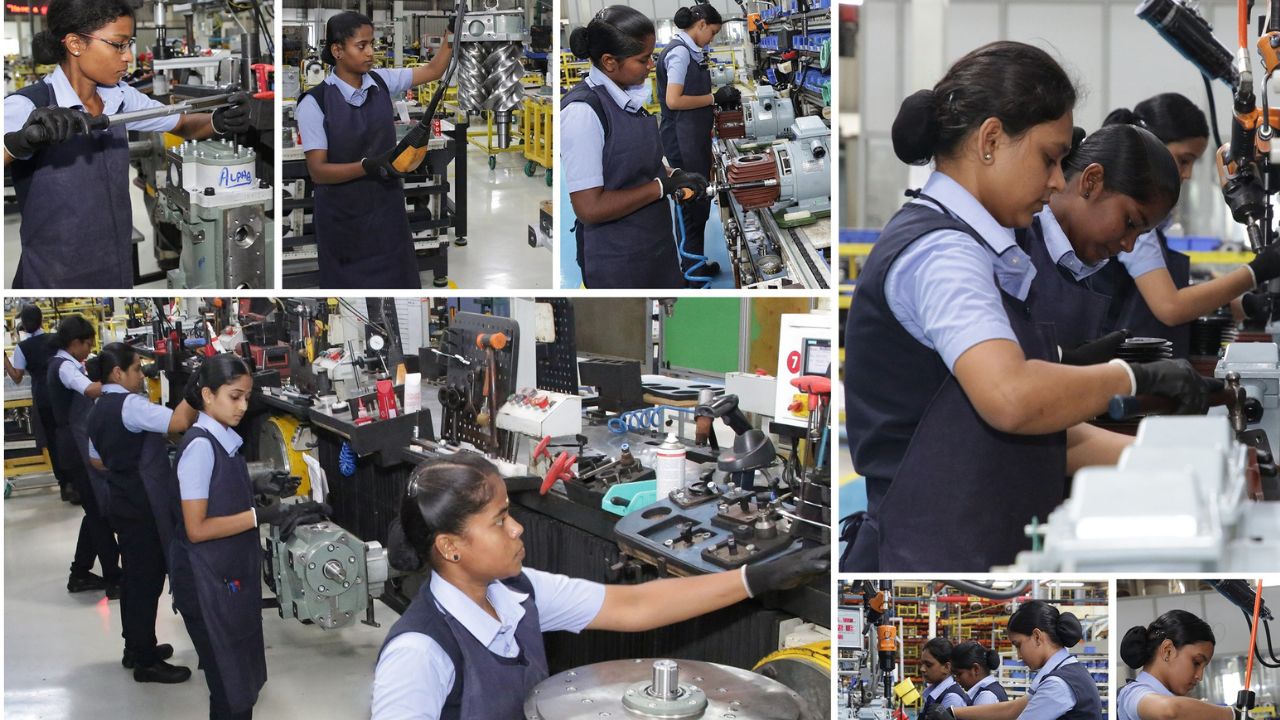“When you are conducting yourself on the shop floor, you have to remember that you are not a woman. Just think of yourself as another professional. And it requires a very big mind change to go beyond gender. You have to stand there as a common worker without looking at the gender. All women who are getting into manufacturing need to understand this.”
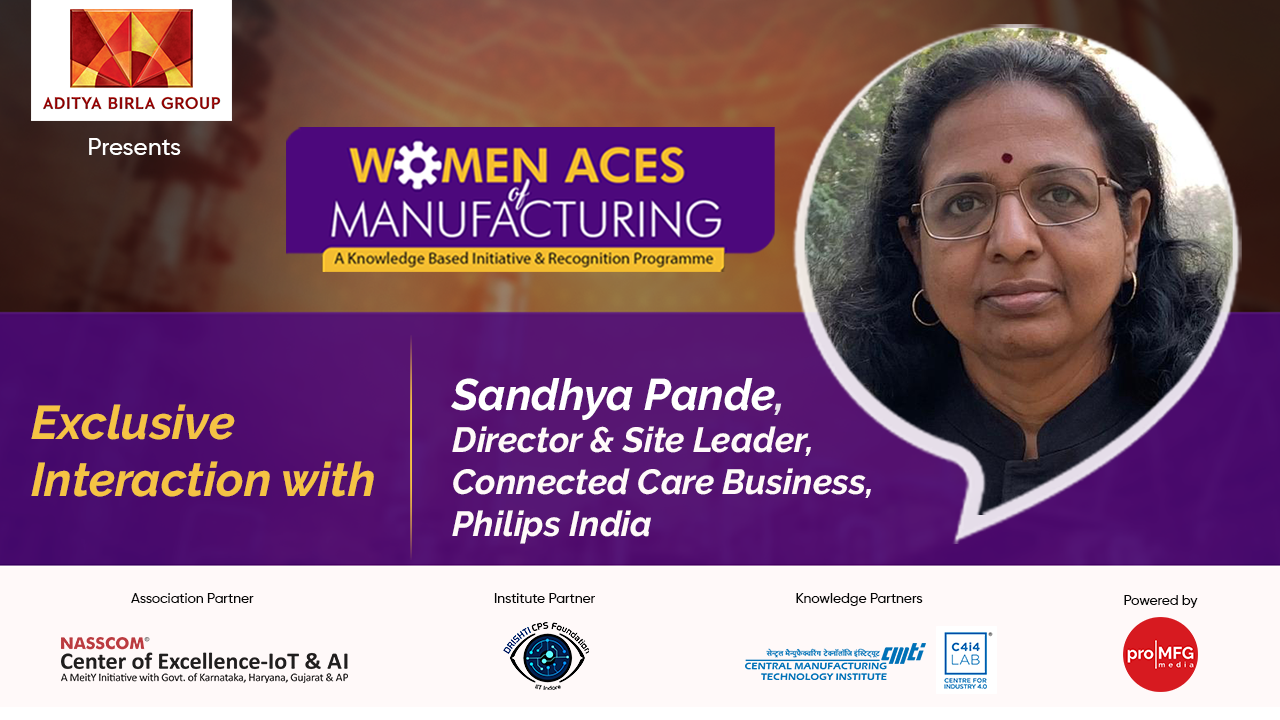
August 2022 : To be a successful woman Ace of manufacturing, you need to lead from the front; you need to show that you can do it rather than telling it, Sandhya Pande, Director and Site Leader - Connected Care Business, Philips, tells in this interaction with Niranjan Mudholkar, Editorial Director, Pro MFG Media. This interview is conducted under the Women Aces of Manufacturing initiative presented by the Aditya Birla Group.
What made you choose a career in manufacturing & engineering?
That’s a very interesting story. When I was in my school days, I was staying near a garage. It was a big garage exclusive to Tata Motors where they would repair all the trucks and some SUVs manufactured by the Company. Since it was my friend’s family garage, we would always go and sit there. I used to see how they would change different parts of the vehicles including the engine. In fact, they even had a small workshop inside that garage that made the place all the more interesting for me. And that’s where I started dreaming to have a similar garage of mine one day. In fact, I never thought that I would become a mechanical engineer. I would just say that when I grow up, I will also have the same kind of garage. But as I grew up, I started realising that this comes from the mechanical background. And that’s how I decided to be a mechanical engineer. Those days there were only three basic branches for engineering – mechanical, electrical and civil engineering. So, if I had to set up a garage then the only option I had was to be a mechanical engineer. And that’s how I entered this field.
What were some of the challenges faced by you?
It was very difficult. During my days in the College of Engineering, when large manufacturing organizations started coming to the campus for recruitment, I realized that it was going to be very challenging for me as a woman mechanical engineer in the 1990s. Being a woman, I was finding it difficult to even appear for interviews. All the big companies like L&T, Bajaj, Tata Motors, Ashok Leyland and so on were coming to our college for campus interviews. But I was not even getting the opportunity to appear for the aptitude test.
That must have been very traumatic for you?! How did you move ahead from there?
Indeed, it was very traumatic. I used to stand outside the interview area for hours hoping that at least somebody would come and speak to me. But no one ever came to me. I used to cry everyday feeling dejected by this treatment. Well, two HR gentlemen did speak to me later. One of them gave me a realistic picture that they do not normally recruit women in mechanical engineering because women do not go on to the shop floor. “Also, we can’t send them on the site. They can’t do welding and they can’t operate machines,” he said. Then he suggested that I should go for the design field. The other guy too had a similar opinion just that instead of suggesting the design field, he asked me to go into the education field. He said that becoming a lecturer or a professor would be the best option for me. After that experience, I never again appeared for any campus interviews.
I am sure that you would know Mr. And Mrs. Kelkar of Grind Master. During those days, they were starting their small scale unit in Aurangabad so I approached them. But they clearly told me that we are just starting off on a very small scale and we are exploring whether we can make the finishing machines or not. So we will not be able to pay you but you can work with us and gain some work experience. I said that’s fine! Just let me start working with you. And after four months, they even started paying me; my first salary was Rs. 800. Soon, I was handling the complete shop floor for them. The shop floor had CNC machines, welding machines, and everything else was there. And I used to handle everything - starting from planning, production, procurement, getting the shopfloor ready, to testing, machine assembly, on-site machine installation and so on. So, I am very grateful to both of them for giving me the opportunity because that created a solid foundation for me as a mechanical engineer and as a manufacturing professional.
And the fact that I was a woman did not bother them. Once they realised my potential, they gave me a free hand in terms of work. They told me that ‘the shop floor is yours, so you manage it’. I remember that we would sometimes work continuously for 48 hours or even for 72 hours to get the job done. I even used to go to the remote sites to get the machines installed for customers and do the trials on the shop floors. Basically, I could do everything I wanted to do in terms of manufacturing and engineering. Those four years have really built a solid foundation for me and I never looked back from there. After four years, I decided to go for higher education and went on to complete my MBA.
One thing which I really realised during those days is that if I really wanted to work as a manufacturing professional then I need two things – self-confidence and the right mentor. Confidence, I already had. But I was very fortunate to get Mr. and Mrs. Kelkar as my mentors during those days.
That’s very inspiring indeed. But I am sure while Mr. And Mrs. Kelkar gave you the opportunity, there would have been other challenges once you started working with the other team members on the shop floor who were all men?
Oh yes. On the shopfloor, there was a very senior operator with about 25 years of experience in operating lathe machines. He was very skilled and could do any precision work on a lathe machine. But at the same time, he was very egoistic and possessive with regards to his work. At that time, my job was to prepare the process planning of every component and give it to this operator. Annoyingly, this operator would just throw it away! His attitude was like ‘you are just coming out of college and you are teaching us how to make the components and how to process the components’. First time, I let it go. Second time, I again let it go. But the third time, I asked him to stand next to me and see how the parts could be made using this process and that too quickly as well as better. He stood up there next to me as I showed him how it worked. And I did the part in 15 minutes less time than he used to take. Moreover, it came out quite well too. After that incident, he never again challenged me. In fact, no other operator ever challenged me. That is because I had proved that I have the knowledge and that I can also do things practically. Basically, once you come to the front with confidence and demonstrate your capability then people will take you seriously and show confidence in you. If I had backed out then things could have gone a different way.
Another challenge that I faced was when I was working in one of the tool rooms as the tool room in-charge. We used to make big injection moulding machines for the automobile industry. Practically I was supposed to handle the overall operational part of the tool manufacturing and I was not supposed to be involved in the trials. But somehow the trials were not going well. We were not able to get a good component; it was a 1.5 metre long plastic injection die required to make the instrumentation panel. People started saying that the tool design is wrong and that the tool manufacturing is wrong. Basically, a blame game had started. Some people were saying that I did not know anything about tool designing. That’s when I stood up and went there. I watched the first trial and observed how the component is coming out and where the parameters were going wrong. So I told them to adjust certain parameters and in the second shot, the component got improved to 90 percent. I checked again and made further changes. The next trial was 100 percent okay.
With these two examples, what I learnt is that there will be challenges as it is very difficult for the male community to accept, to learn and to take the advice as well as guidance from a woman manager. But what is important is that as a woman, you have to demonstrate your knowledge. Having knowledge is one thing but unless and until you go out there and get your hands dirty, people will not accept you or respect you.
Another important lesson that I learnt is that when you are conducting yourself on the shop floor, the first and the very important thing you have to remember is that you are not a woman. Just think of yourself as another professional. And it requires a very big mind change to go beyond gender. You have to stand there as a common worker without looking at the gender. All women who are getting into manufacturing need to understand this.
What are some of the measures that manufacturing organizations take to build a gender-balanced and inclusive work culture?
When we talk about getting women into manufacturing, there are two stakeholders involved. One is the woman herself and the other is the organization. During the days when I started my career, neither of the stakeholders was acceptable for this kind of thought process. Neither the companies were willing to bring a woman on the shop floor nor were the women ready to work on the shop floor. Today, both the stakeholders are willing.
With many Indian companies, there still is a challenge on this front but with large MNCs coming to India, the scenario is now changing as these organizations are encouraging women to come and work in the manufacturing sector. I am very happy to see this scenario where companies want women engineers to come and work on the shop floor. Now let’s come to the other stakeholder – the woman.
While women do want to work on the shop floor, they also want to move out after gaining some experience. The challenge that companies are facing right now is that women do not want to reach the level of plant head or plant in charge. That’s the reason we have very few women engineers in India that are capable of handling the complete plant operations and managing the complete KPIs of the plant. The Plant head’s job is quite akin to that of a doctor; you may be required to be on call for 24 hours! And many women in India are still not prepared for that kind of a job. That’s why there is a tendency amongst women manufacturing professionals to shift to the backend roles that are not directly related to the shop floor. So, one stakeholder is ready to accept women in manufacturing, but the other stakeholder – the woman herself – still needs to mentally prepare to play a long role in manufacturing.
In this context, an initiative like the ‘Women Aces of Manufacturing’ can play an important role in bridging the gap. It can encourage diversity and empower women manufacturing professionals in the true sense.
What role do you think academia can play in enabling more women to work in the manufacturing sector?
Yes, academia can definitely play a big role. Today, manufacturing operations have also changed quite a bit. A lot of automation has come and as a result manual operations have reduced drastically. So the physical strain which comes on any manufacturing professional - male or female – has also lessened to a great extent. Today, it is relatively more comfortable for women to work on a shop floor than it was earlier. Automation and robotics are changing the way shop floors function. So, while preparing women for taking up the jobs in manufacturing, the academia can simulate the modern work environment and prepare women professionals accordingly. If you really train women at the college level, they would understand that all this technology can make their work a lot easier on the shop floor. So from that point of view, academia can really play a critical role in preparing women for manufacturing roles.
How can women manufacturing professionals tackle workplace diversity issues head-on and drive organisational accountability while also focusing on their own professional growth?
This is indeed an important question. Many times, a higher position is available within an organization. Obviously, to fill up that position, someone needs to recruit or someone has to promote the right candidate. But many times, what happens is that even if a woman has equal competencies and equal skills, the preference is given to a male colleague. I have personally gone through that scenario! But what I learned from that scenario is that if you really want to stay ahead of your male colleagues then you need to be at 110 percent. It is that extra 10 percent, which will give you the edge.
Also, in many cases what happens is that we focus only on the technical skills. However, nowadays, there is a lot of importance given to behavioural competencies as well. So I have also started working very strongly on these skills which are required from the people management as well as leadership perspectives. You have to be equally proficient with business and strategy skills. Keep manufacturing as your core but also try to gain other skills which are required to grow.
What advice would you offer to young women engineers who are starting their journey?
Firstly, they have to remove their own mental block. If you think that ‘I am a woman and I can’t work on the shop floor’ then you cannot progress in this industry. But once you remove this mental block then you will start loving manufacturing. There is immense pleasure to create and build something from the design stage into a real product!
Secondly, you need to understand as to how you prepare yourself for the role in manufacturing in terms of scale, in terms of knowledge and in terms of competencies. Thirdly, you have to confidently demonstrate what you can do on the shop floor.
Importantly, forget about the gender when you are on the shop floor. You have to treat yourself as an equal with all your colleagues on the shop floor. If you start taking advantage of the fact you are a woman and say that you can’t do this or can’t work on this or can’t come into the night shift’, then you will not become successful in manufacturing. To be a successful ‘Woman Ace of Manufacturing’, you need to lead from the front; you need to show that you can do it rather than telling it.
NEWSLETTER
TRENDING ON PRO MFG
MORE FROM THE SECTION




